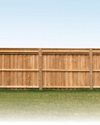Cars and trucks have changed a lot over the last 10 years.

These days, almost every mechanical system is controlled by electronics. In fact, a typical two- or three-year-old vehicle has more than 100 microprocessors, 50 electronic control units and 5 miles of wiring. If you think you can thoroughly check out a late-model vehicle by taking it for a short spin and kicking the tires, think again.
Finding a reliable used vehicle works best as a three-step process that involves online research, a thorough initial inspection, and a final physical and computerized inspection performed by a mechanic. We’ll give you some tips on handling the first two steps yourself so you can weed out the clunkers before spending money for your mechanic to do a final check. But trust us: If you skip the final mechanic’s inspection, it could cost you dearly. So if you have your heart set on a particular make and model, start with Step 1 before you go shopping.
STEP 1:
Check out vehicle reliability
Some makes, models, engines and transmissions are known for their high failure rates. Those are the facts you want to know before you start shopping. Some of the following sources charge a fee but may also be available for free at your local public library. Here’s where to look for that information.
Consumer Reports ($30 per year)—Vehicle system reliability info based on actual readers’ experience.
Truedelta.com ($10 for 90 days)—Here you’ll find vehicle system reliability information along with actual repair costs incurred by owners.
Alldatadiy.com ($27 per year) or eautorepair.net ($26 per year)—These up-to-date lists of technical service bulletins from car makers disclose known failures, updated parts and repair procedures, and software fixes.
STEP 2:
Do your own inspection
Esta historia es de la edición October 2016 de The Family Handyman.
Comience su prueba gratuita de Magzter GOLD de 7 días para acceder a miles de historias premium seleccionadas y a más de 9,000 revistas y periódicos.
Ya eres suscriptor ? Conectar
Esta historia es de la edición October 2016 de The Family Handyman.
Comience su prueba gratuita de Magzter GOLD de 7 días para acceder a miles de historias premium seleccionadas y a más de 9,000 revistas y periódicos.
Ya eres suscriptor? Conectar

7 Bicycle Maintenance Tips
Keep your bike in tiptop shape and ride safe!

SETTING FENCE POSTS WITH EXPANDING FOAM
Any fence builder knows you need strong posts for a strong fence, and that means backfilling the postholes with a dense, hard material other than dirt.

PEBBLE MOSAIC STEPPING STONES
COLLECT SOME RIVER ROCK AND MAKE YOUR OWN UNIQUE STEPPINGSTONE PATH

EARTH-FRIENDLY WEED KILLERS
HEALTHIER CHOICES FOR HUMANS AND THE ENVIRONMENT

DIY! HYDROPONIC GARDEN
FRESH VEGETABLES AT YOUR FINGERTIPS

GROW MINI VEGETABLES
GROW A GARDEN IN A TINY SPACE!

BUILD A VERTICAL GARDEN
TIME TO GROW UP!

MODERN WATER FOUNTAINS
A SPLASH OF PEACE FOR YOUR PATIO

9 ALTERNATIVE USES FOR SAWDUST
Every fully stocked wood shop has a table saw. You can usually find a pile of sawdust under it, even if it's used only occasionally. If a shop has a belt sander or band saw, there's probably another pile of finer sawdust under that. Even people without stationary tools have sawdust accumulation on their workbenches.

INSULATE WITH FOAM
IT'S A GREAT ALTERNATIVE TO FIBERGLASS